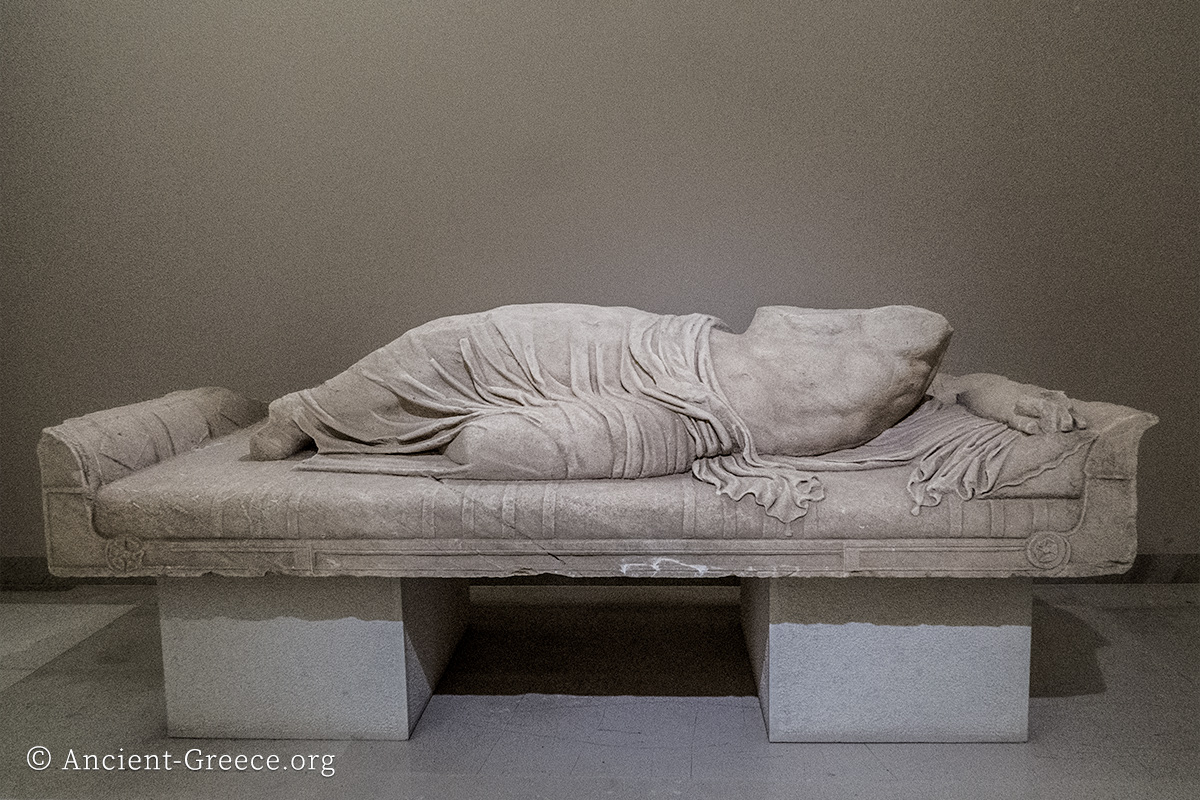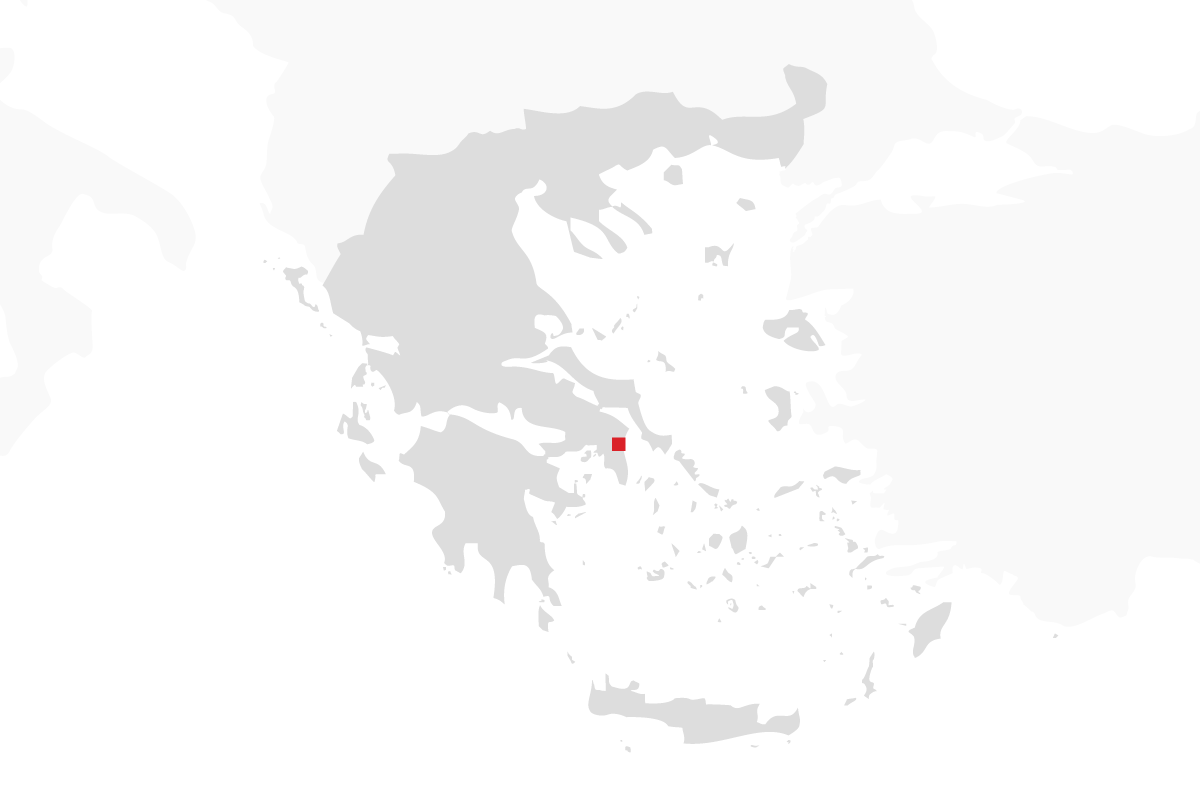
On this page:
The Archeological Museum of Marathon is located in the small coastal town by the same name, and exhibits art and artifacts from various excavation sites in the vicinity.
The area has been continually inhabited since the Stone Age so a plethora of artifacts from that era all the way to the Roman period can be seen in its halls.
Stone and Bronze Age





Left to right:
Terracotta female figurine from excavations of a Neolithic-Early Bronze Age settlement at Marathon street, Boriza).
Marble figurine from the Early Cycladic cemetery at Tsepi (3200-2000 BCE).
The Cave of Pan is located above Oinoe, in the valley of the river Chandakas. It was occupied continuously from 5300-1100 BCE. The Athenians, after their victory over the Persians in the battle of Marathon, founded inside the cave the sanctuary of the god Pan, in appreciation of his assistance in the battle. A large image of Pan’s cave adorns the first room of the museum.
Middle (2000-1600 BCE) and Late Helladic (1600-1100 BCE) ceramic vessels: Ceramic Beak-mouthed jug from Vrana tombs, and Globular vase from Tsepi.
Dark Age, Archaic, and Classical Eras




Left: A large Geometric Amphora from Arnos. 10-7 c. BCE.
Center: Artifacts found during work for the 2004 Athens Olympics, with a marble discus with an inscription “Dikaios dedicated me”. 6th c. BCE.
Right: Fragments from the trophy dedicated by the Athenians to commemorate their win in the battle of Marathon. A replica can be found on the site of this original column.
Hellenistic and Roman Era






Top row:
Marble statue of a reclining figure, probably representing the river Chandakos. Found at Pythion at Oinoe. 2nd c. CE. Marble statue.
Bottom row, left to right:
Herm.
Portrait of Herodes Atticus, 2nd c. AD.
General view of sculptures from the Classical, Hellenistic, and Roman Eras.
Statues from the Egyptian sanctuary which was founded by the Romans near Marathon in the 2nd c. CE.




